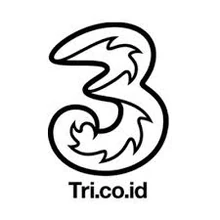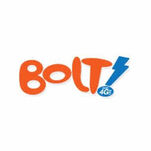The political unrest, civil war and violence in Iraq has battered the telecommunications sector and created a very challenging environment for mobile operators. The unstable economy combined with a decrease in consumer spending – along with the destruction of telecoms infrastructure; has resulted in declining mobile subscriber rates and revenues.
However the Iraqi telecom market made a recovery starting in 2016, and is forecast to reach 34 million subscribers by 2017, exceeding its 2014 pre-Daesh level, according to GlobalData.
The three mobile network operators which hold national licences are Zain Iraq, Asiacell and Korek Telecom.
Zain is the largest mobile phone operator in Kuwait but also has operations in Bahrain, Iraq, Jordan, Lebanon, Saudi Arabia and Sudan and manages a unit in Morocco. Zain Iraq is the largest mobile operator in Iraq by subscribers that amount to 13.7 million by end of 2017. The company is headquartered in Baghdad and covers 97% of the Iraqi population nationally. 3G services were first launched by Zain in 2015, followed by the other mobile operators, all using the 2100 MHz band. LTE services have been deployed in northern Iraq in the 1800 MHz band by Alcatel-Lucent and Regional Telecom.
A deal has been made with Nokia who will modernize and expand Zain Iraq's 3G and 2G networks with a special focus on the holy cities of Karbala and Najaf, to support the expected increase in data and voice traffic during Zeyara/pilgrimage as millions of people converge on the region.
Zain Iraq has also been instrumental in rebuilding the network infrastructure and ensuring that the newly liberated regions of Anbar and Mosul receive the best data coverage in terms of 3G.
Korek Telecom: Korek, in which Orange has a stake, started operating in 2000, earlier than any other operator in Iraq. It has had an Iraq-wide licence since 2007 and its network is nationwide was reported as of January 2016 to employ about 2,500 people, to have deployed 3,500 towers and to be serving 7 million subscribers, giving it just over 20% of an estimated national Iraqi subscriptions base of about 34 million and showing a roughly doubled market share since 2011. Korek has some advantages, i.e. a relatively secure base in Kurdistan, where it has been reported to have a 70% share, and a good relationship with the local government, which now has an assured income from its 17% share of national oil revenue. Through further market share gains, Iraqi national growth, diversification into markets like banking and social stabilisation, as well as the lack of fixed infrastructure in Iraq, it is possible that Korek could double in size in the next five years.
Asiacell claims nearly 12.5 million customers with a network that covers 99.06% of the Iraqi population. Asiacell was the first mobile telecommunications provider in Iraq to achieve nationwide coverage, offering its services across all of Iraq’s 19 governorates including the national capital Baghdad and all other major Iraqi cities.
Future challenges development:Despite the challenges there is high international interest in the Iraqi market with its potential to recover economically pinned on its large oil and natural gas reserves. Iraq offers much potential for telecoms infrastructure development with many under-served areas requiring better coverage and/or reconstruction. There will also be opportunities in developing both 3G and 4G deployment, with early signs that mobile data revenues are already increasing on the back of existing 3G networks.
However the Iraqi telecom market made a recovery starting in 2016, and is forecast to reach 34 million subscribers by 2017, exceeding its 2014 pre-Daesh level, according to GlobalData.
The three mobile network operators which hold national licences are Zain Iraq, Asiacell and Korek Telecom.
Zain is the largest mobile phone operator in Kuwait but also has operations in Bahrain, Iraq, Jordan, Lebanon, Saudi Arabia and Sudan and manages a unit in Morocco. Zain Iraq is the largest mobile operator in Iraq by subscribers that amount to 13.7 million by end of 2017. The company is headquartered in Baghdad and covers 97% of the Iraqi population nationally. 3G services were first launched by Zain in 2015, followed by the other mobile operators, all using the 2100 MHz band. LTE services have been deployed in northern Iraq in the 1800 MHz band by Alcatel-Lucent and Regional Telecom.
A deal has been made with Nokia who will modernize and expand Zain Iraq's 3G and 2G networks with a special focus on the holy cities of Karbala and Najaf, to support the expected increase in data and voice traffic during Zeyara/pilgrimage as millions of people converge on the region.
Zain Iraq has also been instrumental in rebuilding the network infrastructure and ensuring that the newly liberated regions of Anbar and Mosul receive the best data coverage in terms of 3G.
Korek Telecom: Korek, in which Orange has a stake, started operating in 2000, earlier than any other operator in Iraq. It has had an Iraq-wide licence since 2007 and its network is nationwide was reported as of January 2016 to employ about 2,500 people, to have deployed 3,500 towers and to be serving 7 million subscribers, giving it just over 20% of an estimated national Iraqi subscriptions base of about 34 million and showing a roughly doubled market share since 2011. Korek has some advantages, i.e. a relatively secure base in Kurdistan, where it has been reported to have a 70% share, and a good relationship with the local government, which now has an assured income from its 17% share of national oil revenue. Through further market share gains, Iraqi national growth, diversification into markets like banking and social stabilisation, as well as the lack of fixed infrastructure in Iraq, it is possible that Korek could double in size in the next five years.
Asiacell claims nearly 12.5 million customers with a network that covers 99.06% of the Iraqi population. Asiacell was the first mobile telecommunications provider in Iraq to achieve nationwide coverage, offering its services across all of Iraq’s 19 governorates including the national capital Baghdad and all other major Iraqi cities.
Asiacell is also claims to be the best internet provider with its 3.9G data services, offering the best network coverage in the entire of Iraq since January 2015.
Future challenges development:
Prior to the more recent unrest 4G LTE had been deployed in some areas of Iraq and there was also a progressive fibre optic network underway across parts of the country. While it is unknown how widespread the damage to this infrastructure has been, the country is still moving forward with the Ministry of Communications (MoC) recently launching a Fibre-to-The-Home project. This will see an initial 90,000 lines deployed across selected governates.
Overall the current security situation is severely and negatively impacting telecommunications development in Iraq. However, there are positive signs for a future of improvement, stability and reconstruction.









